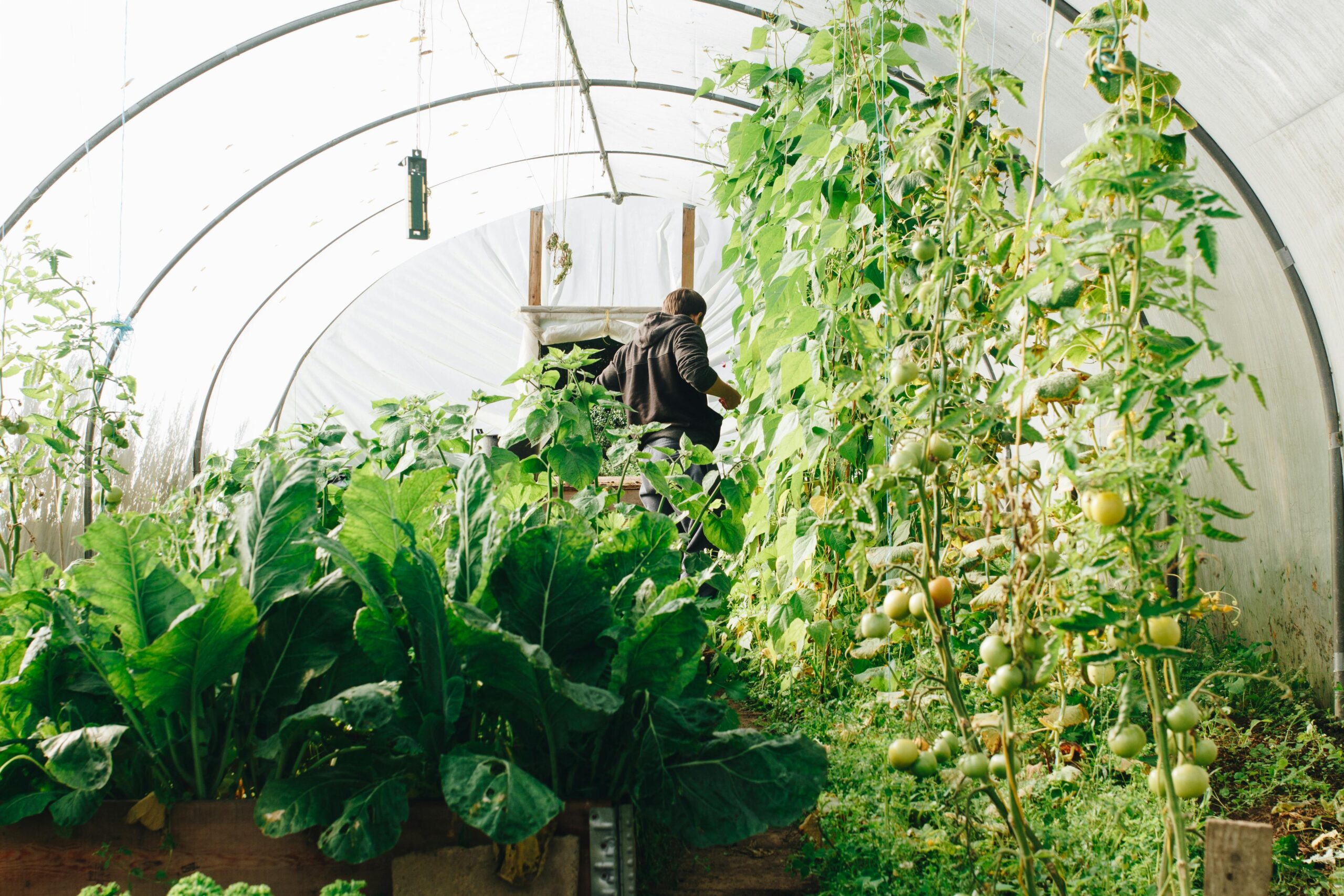Set up a large greenhouse and enjoy the opportunity to harvest fresh vegetables and beautiful flowers year-round.
This controlled environment not only extends the growing season, but also protects against harsh weather, pests, and disease. Whether you’re a hobbyist or a professional gardener, a well-planned greenhouse can greatly enhance your gardening projects. Follow our guide to create your own productive and sustainable greenhouse from scratch.
Choose the right location
Choosing the perfect location is the first important step in greenhouse gardening. Please use a location like this:
Make the most of sunlight: Make sure the area receives plenty of sunlight, which is essential for plant health and growth. The ideal location should receive at least 6 hours of direct sunlight per day. Wind protection: Protect your greenhouse from strong winds that can damage the structure and plants. A location near a natural windbreak or a constructed barrier can provide the necessary shelter. Ensure proper drainage: Choose a location with good drainage to prevent water from pooling around or under the greenhouse. This can lead to problems with the greenhouse structure and plant roots.
Plan greenhouse size and design
Consider how much space you can devote to your greenhouse and what you will grow. Common designs include:
A-Frame: Perfect for maximizing vertical space. Dome: Provides excellent light distribution and wind resistance. Lean-to: Uses an existing wall or building and is a great option when space is limited. Materials and Tools: Durable materials are required. Frames are available in aluminum or galvanized steel, and panels are available in glass or polycarbonate. Tools such as a drill, saw, and tape measure are required for assembly.
Construction steps
Lay the foundation: Whether you choose a concrete slab, gravel, or other method, make sure it’s level and stable. Assembling the frame: Build the frame according to the design plan. Attach the panels securely to the frame to withstand environmental stresses. System Installation: Install the necessary ventilation, heating, and possibly cooling systems in your greenhouse to maintain an optimal climate.
Choosing the right plants
Determine the types of plants that will thrive in your greenhouse.
Vegetables: Tomatoes, cucumbers, and peppers are popular because they require controlled conditions to grow. Herbs and Flowers: Grow basil, mint, chrysanthemums, and orchids for a variety of uses and visual appeal. Exotic or tropical plants: Consider plants. Although it is not native to your area, it can be propagated in a greenhouse environment.
Greenhouse environment management
Temperature and humidity control: Install a thermostat and humidifier to control the internal environment. These devices help simulate the natural environmental conditions required by different plants. Watering systems: Automatic irrigation systems, such as drip irrigation, ensure that your plants receive the right amount of water without wasting it. Pest Management: Keep your greenhouse free with regular checks and organic pest control strategies. of unwanted guests.
Community Impact: Utilizing large greenhouses for community groups
Large-scale greenhouses offer tremendous value beyond mere commercial or personal gardening, as they serve as dynamic educational tools for community groups.
These structures can transform the way community groups approach subjects in botany, agriculture, and environmental science.
Community participation
If you have a large greenhouse on your property, consider using it as a community hub where small local groups can gather to learn and grow together. Community greenhouses can offer gardening workshops and courses, host farmers markets, and provide space for community supported agriculture (CSA) programs.
These large greenhouses not only encourage local food production, but also strengthen community bonds by bringing people together for the common good of sustainability and healthy living.
Seasonal Use: Adjust your greenhouse for year-round productivity
Managing a large greenhouse through seasonal changes requires careful planning and adaptation to maintain productivity throughout the year. Here are some strategies to maximize your greenhouse production, regardless of the season.
spring
Prepare for the growing season by starting the seedlings early and moving them to a greenhouse to extend the growing season before transplanting outdoors. Make sure your ventilation system can handle warmer days.
summer
Use a shade cloth to increase ventilation to prevent overheating and protect your plants from the harsh midday sun. Consider growing heat-tolerant varieties this season.
autumn
Begin transitioning your greenhouse for cooler weather. This is a great time to grow cool season crops like kale, carrots, and lettuce. Make sure all heating systems are working before the temperature drops.
winter
A heating system is used to maintain a stable temperature within the greenhouse. The focus may shift to growing fewer plants that are more cold-hardy or frost-tolerant, or to using space to overwinter less hardy plants.
Installing a large greenhouse is an investment in your gardening passion and expertise. With careful planning and maintenance, you can enjoy a variety of plants that grow healthier and stronger, regardless of the season. Take the first step to building a greenhouse paradise and enjoy the benefits of gardening all year round
Explore Garden Savvy’s garden supplier catalog to find all the materials, tools, and expertise you need to start a large-scale greenhouse. Gardeners can also utilize Hortisketch’s virtual garden planner to meticulously design and visualize the layout of a greenhouse on their property, ensuring optimal placement and functionality before construction begins.





